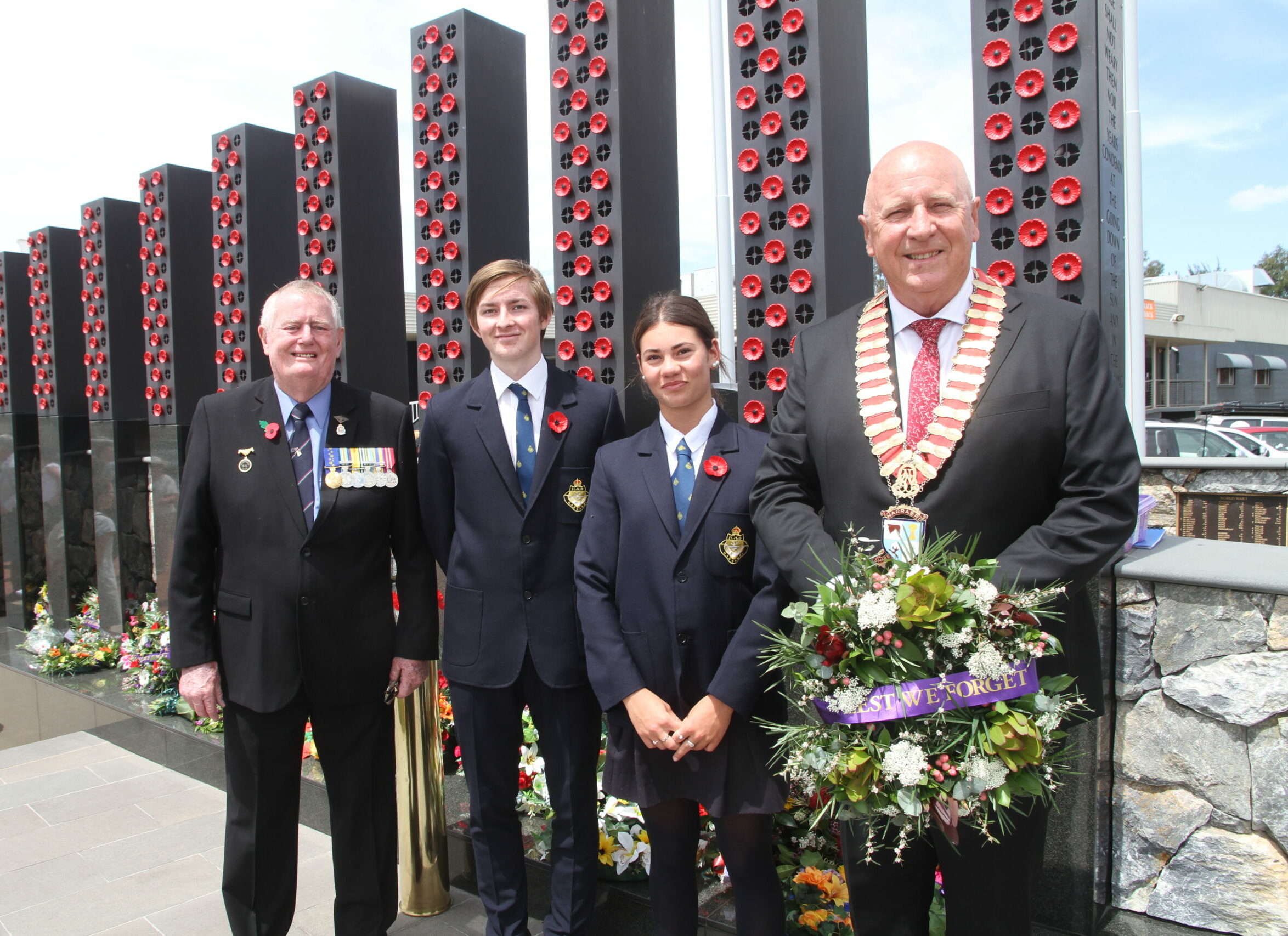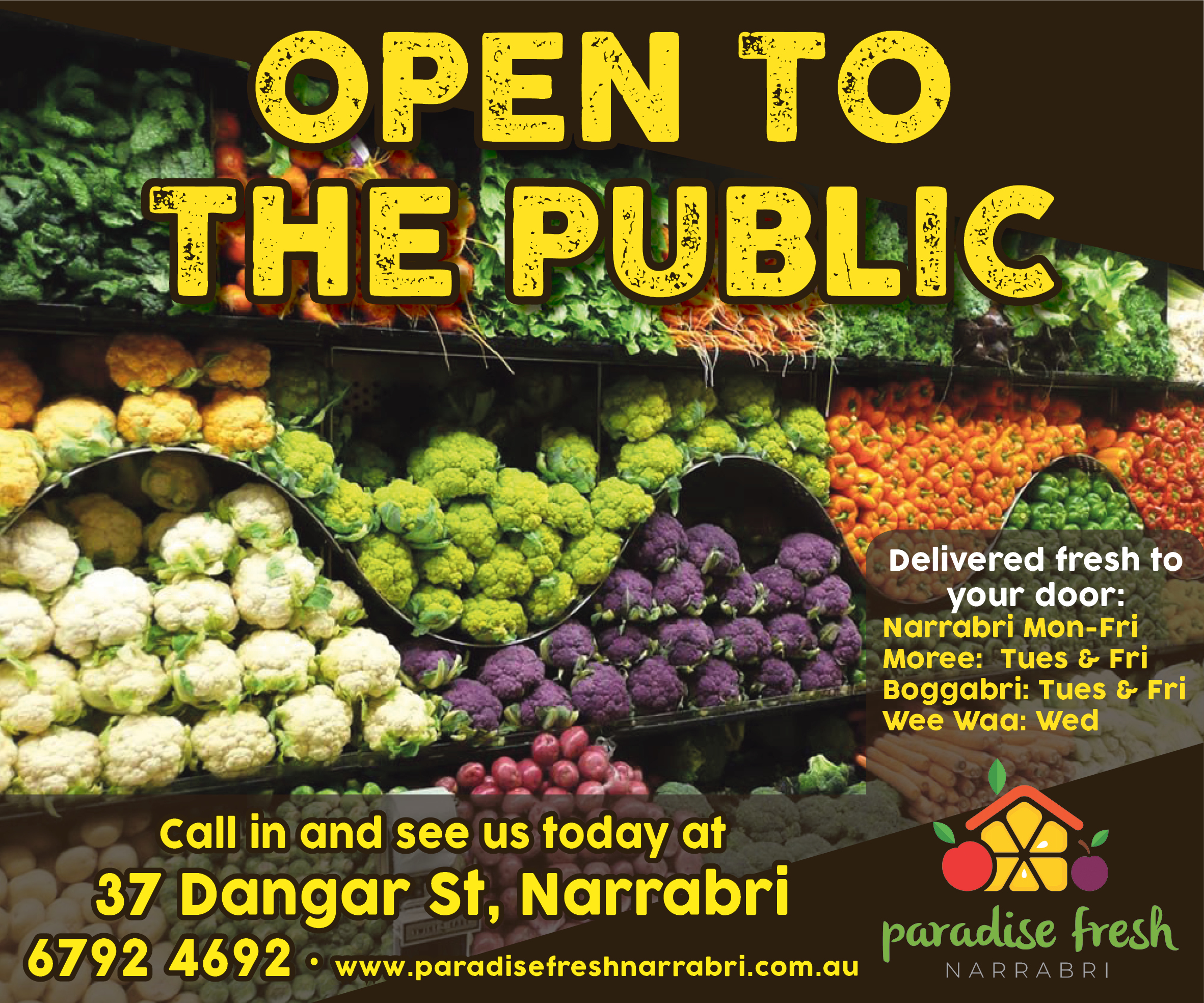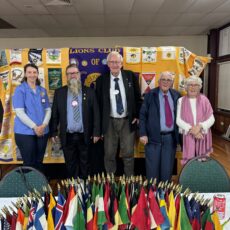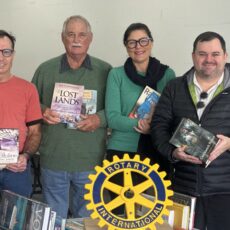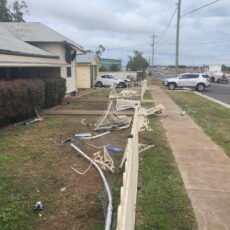“From time to time people may ask ‘why do we have this commemoration of wars which were fought so long ago?” Narrabri RSL sub branch president Gary Mason OAM said at Friday’s Remembrance Day service.
“The answer is that it’s because so many of our people have been lost in the wars. They must be remembered – and it’s all about the young people as we go forward, to remember those who served and died for us, and honour their sacrifice.”
Mr Mason was leading the traditional Remembrance Day ceremony, which commemorates the end of the Great War, 1914-18, and in his oration, emphasised the important ‘reason for remembrance.’
“For Australia, the First World War remains the costliest conflict in terms of deaths and casualties,” Mr Mason said.
“From a population of less than five million, 416,809 men and women enlisted, of whom more than 60,000 were killed and 156,000 wounded, gassed, or taken prisoner.”
And, as in small communities across Australia, remembrance has particular poignancy in our district. The sad reality of local service and sacrifice is contained in stark local statistics.
“The population of the Narrabri -Namoi Shire area during World War I was approximately 4000,” Mr Mason said.
“Of that population, 687 volunteered, and their names are enshrined on the honour rolls at Narrabri, Narrabri West, Boggabri, Wee Waa, Pilliga, Edgeroi, Bellata, Baan Baa, Willala, Bullawa and Gwabegar.
“One hundred and five of these volunteers paid the supreme sacrifice.
“They never returned to their beloved country.
“Imagine the effect this had on their families, friends and the small community of Narrabri, not forgetting the Diggers who did return with physical and undiagnosed mental injuries.
“It is estimated that a further 273 diggers in the Narrabri district did not successfully return to pre-war civilian life.”
The Narrabri ceremony, suspended for the past few years, as were observances across Australia because of COVID, drew a large attendance.
Mr Mason said organisers were delighted with the community response.
A feature commented on by many at the ceremony was the contribution from young people, school leaders who researched and confidently delivered addresses to the gathering.
Guests included Member for Parkes Mark Coulton, Narrabri Shire mayor Ron Campbell and Narrabri RSL Club president Bruce O’Hara.
Mr Mason welcomed bugler Ian Berney and school captains Miranda Hamilton and Jesse Weekes (Narrabri High School), Charlee Dickinson and Romeo Backhouse-Smith (St Francis Xavier’s), Grace Lennox and Kostah Rooney (Narrabri Public School) and Amelia Lennox and Charlie Butler (Narrabri West Public School).
The ceremony, the first unrestricted event since the easing of pandemic public health regulations, drew a large crowd.
Mr Mason reminded the audience of the cost in lives lost and families torn apart by the First World War.
Remembrance Day marks the cessation of hostilities in 1918.
“Each year on the 11th hour of the 11th day of the 11th month, we join our fellow Australians and our compatriots around the world in solemn, silent reflection as we remember the tragedy of World War I and the ultimate sacrifice made by the men and women who have served in the Great War and in other armed conflicts in which our nation was engaged,” Mr Mason said.
“We pause, we reflect and, with grateful thanks, remember them.”
The cost to the Australian community is measured in lives lost and service people physically injured, but there was another great cost – psychological injury.
“With the information we have now on post-traumatic stress disorder, the number of people lost in the Great War was much higher than the statistics reveal,” Mr Mason said in his address.
“They called it ‘shell shock’ back then, and it was treated as a weakness in a person’s character.
“Many diggers returned home only to isolate themselves from the families and friends, and some committing suicide.
“Sadly, these casualties were never documented in the Australian losses of World War I.”
To order photos from this page click here

